Late last year I was confined to my apartment for a week and that opened an opportunity for me to write about a 6 x 6 format camera that I have been meaning to buy for years. That medium format camera is the redoubtable Mamiya C330f Twin Lens Reflex. I own two Rolleiflex TLRs, a 3.5 E and T with a prism finder; I should be happy with these two MF TLRs. But I was intrigued by the possibility of added versatility that the Mamiya could bring to the table, so I pulled the trigger on one being auctioned on eBay. The seller stated that he was not sure if the camera was working or not, and that he did not know much about it to say that it worked. But the kicker was the “Buy it now” price: $25 plus shipping.
An Ugly Duckling
The aesthetic condition did not inspire confidence. The waist level finder is masking-taped to the focus screen frame because the nut that is supposed to hold it in place is missing. The leather covering on the eft side is missing. Other than that, the body didn’t look excessively abused. I reasoned that if the camera was a basket case I wouldn’t feel so bad. On the other hand, if it worked I would end up with a good platform and just refurbish it myself. As it turned out, the Mamiya was mechanically sound, so I congratulated myself for making a leap of faith.
To complete the project, my first purchase was a used focus screen with the metal frame that had the missing nut. It cost me about $40. I cleaned it up, removing accumulated grime and dust, then mated it to the camera body and reattached the WLF. One down.
To validate my initial finding that the camera is mechanically sound I needed a lens to check if the camera would cock the lens after winding the film advance lever. The lens I chose is the 105mm f/3.5, a useable normal lens focal length. It was priced around $90, and the seller guaranteed that it worked perfectly, and I believed her. The next lens I bought off eBay is a 65mm f/3.5 wide-angle. Both lenses have built-in leaf shutters with speeds from 1 second to 1/500th of second. The 65mm needed a CLA owing to inaccurate speeds. I took it to my friend, Pham, of Canada Cameras in Montebello, CA. I got it back hale and hearty after one week. The kit is now complete and working as it should. However, it did not look presentable due to the missing left-side covering. I then ordered a set of leather covering from an eBay seller and re-covered the entire camera body, including the WLF. The covering material is colored blue, and it endowed the Mamiya with a whole new vibe.
Should I keep it?
I’ve often asked myself if I am invested enough with the Mamiya to keep it. Given that I already own two Rollei TLRs, and two Hasselblad 500C bodies and lenses, is there a sane logic still remaining to keep it? Throughout the couple of months after I had refurbished it, I still have to feel a firm connection to the Mamiya in the same intensity that I have with the Rolleis and Hasselblads. I think that uncertainty is fueled by the Mamiya’s weight and dimensions: it is a beast of camera, that is brought about by the many other additional features that it embodied when compared to the Rolleis. First off: lens interchangeability, which the Rolleis lacked. The Mamiya upped the ante with automatic parallax compensation with a feature called Paramender ,which is a hoot to use. In the end, however, I was still inclined to give the Mamiya the boot. What the Mamiya did not have is more than compensated for by the Rolleis’ svelte body and traditionally superior built. As for the lenses, I am keeping my admittedly subjective opinions to myself. In finality, I let the Mamiya go. On hindsight, the Mamiya had a bunch of features up its sleeves: for one, a good-working condition C330f or its lighter and less-featured sibling, the C220, will cost a lot less than a used a Hasseblad 500 Series body or Rolleis’ latest and most improved iterations, the Rollei 2.8f and the 3.5f with either Carl Zeiss Planar or Schneider Xenotar lenses, both of which I owned and sold in a moment of insanity. We live and learn!
What is it good for?
Comes now the time to put the Mamiya to its first test. I loaded it with a black-and-white roll of Ilford shot at the box speed of 400 ISO. I drove to the city of Pasadena, about 10 miles northeast of downtown Los Angeles. This California city is the birthplace of the world-famous “Tournament of Roses”, which is held here on New Year’s Day. The Pasadena City Hall architectural style has the elements of both Mediterranean Revival and Spanish Colonial Revival cues. It was completed on December 27, 1927 and cost $1.3 Million, measures 361 feet by 242 feet and rises six stories. The defining dome, located above the west entrance, is 26 feet tall and 54 feet in diameter. The City Hall is a favorite shooting location for filmmakers. The courtyard was used in the 1995 movie “A Walk in the Clouds” to portray a Napa Valley town square. It has also been used as an embassy in the “Mission Impossible” television series, and many others. The courtyard at the back entrance is also a suitable site for wedding pictorials, and on the day I shot there, one was in progress.
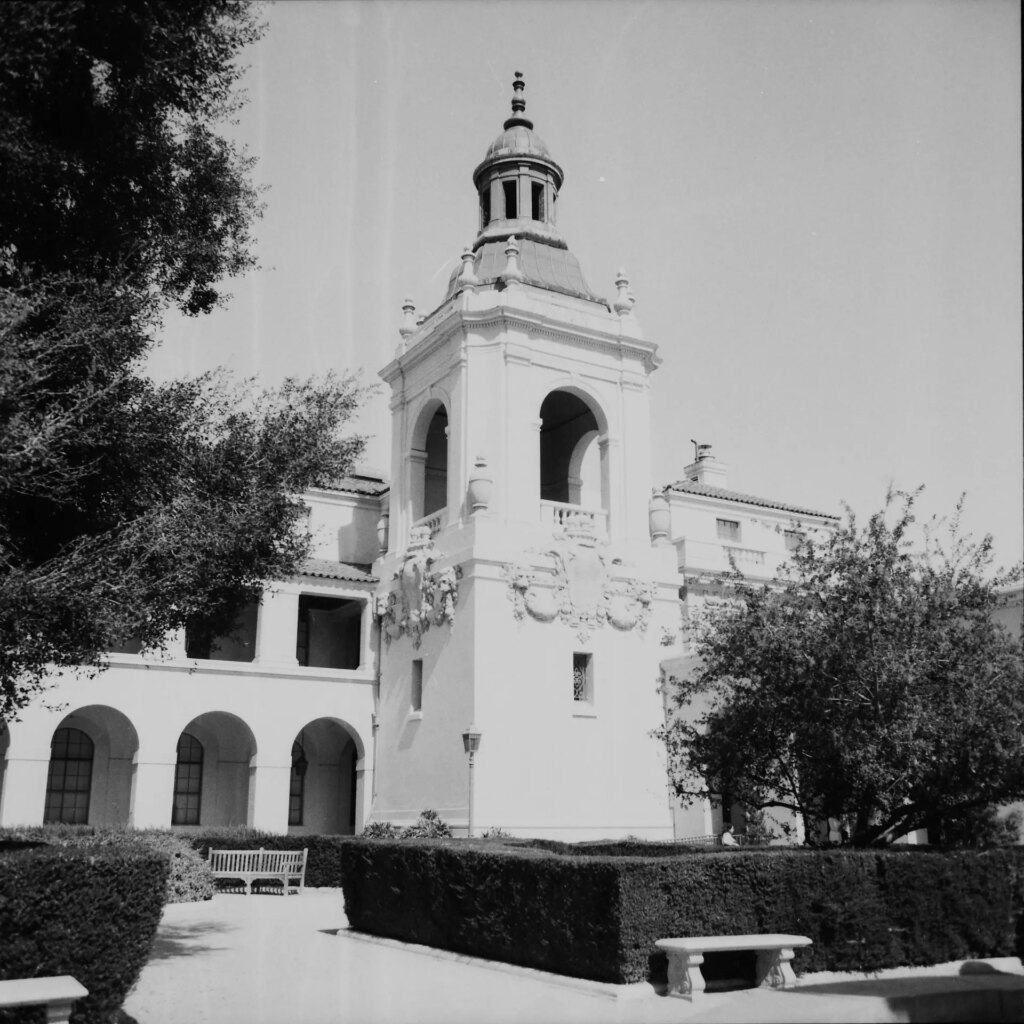
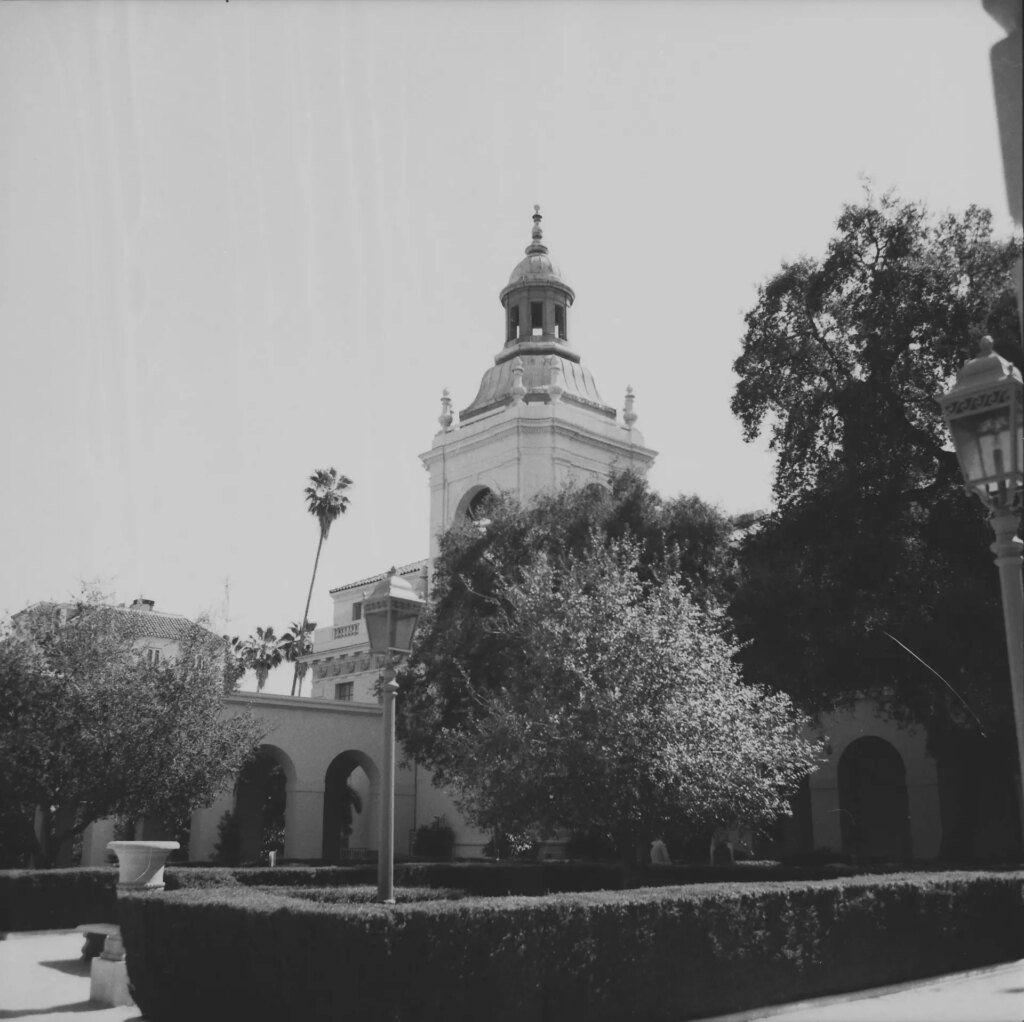
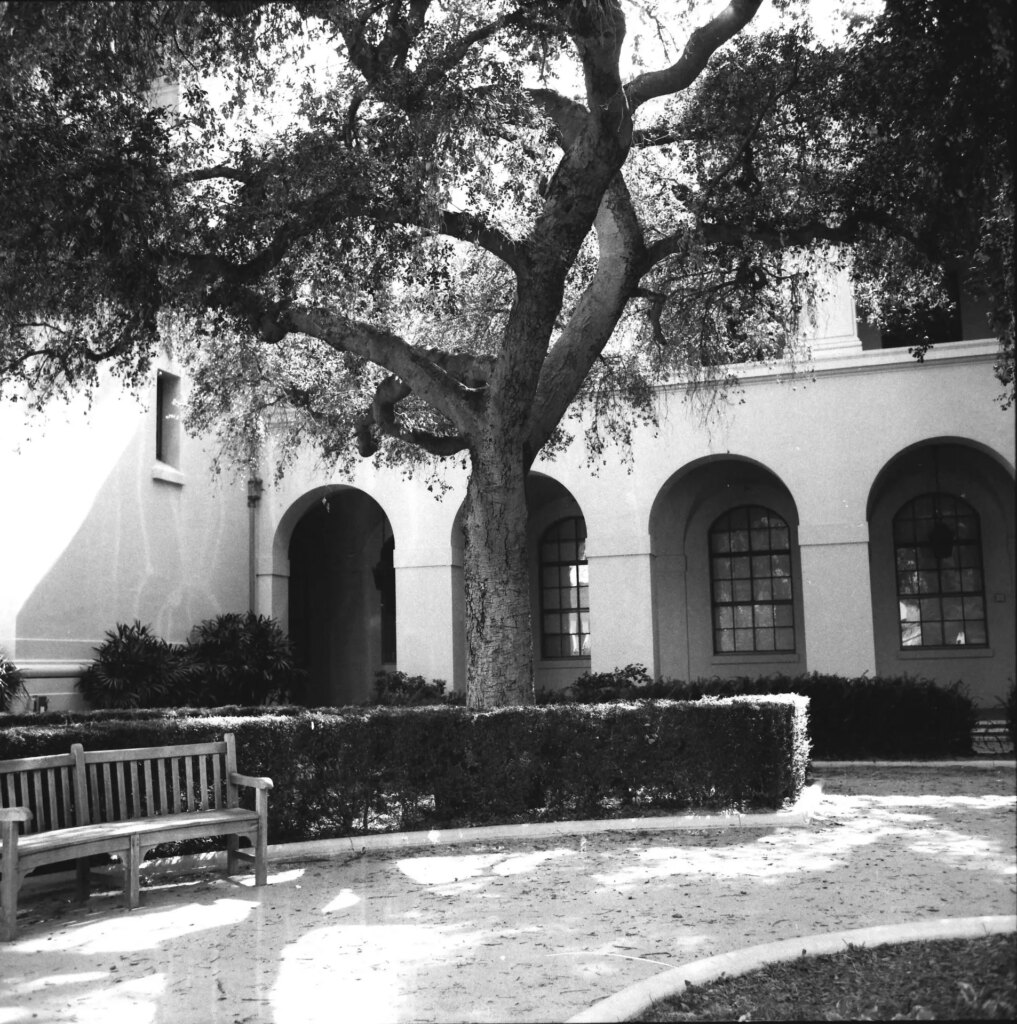
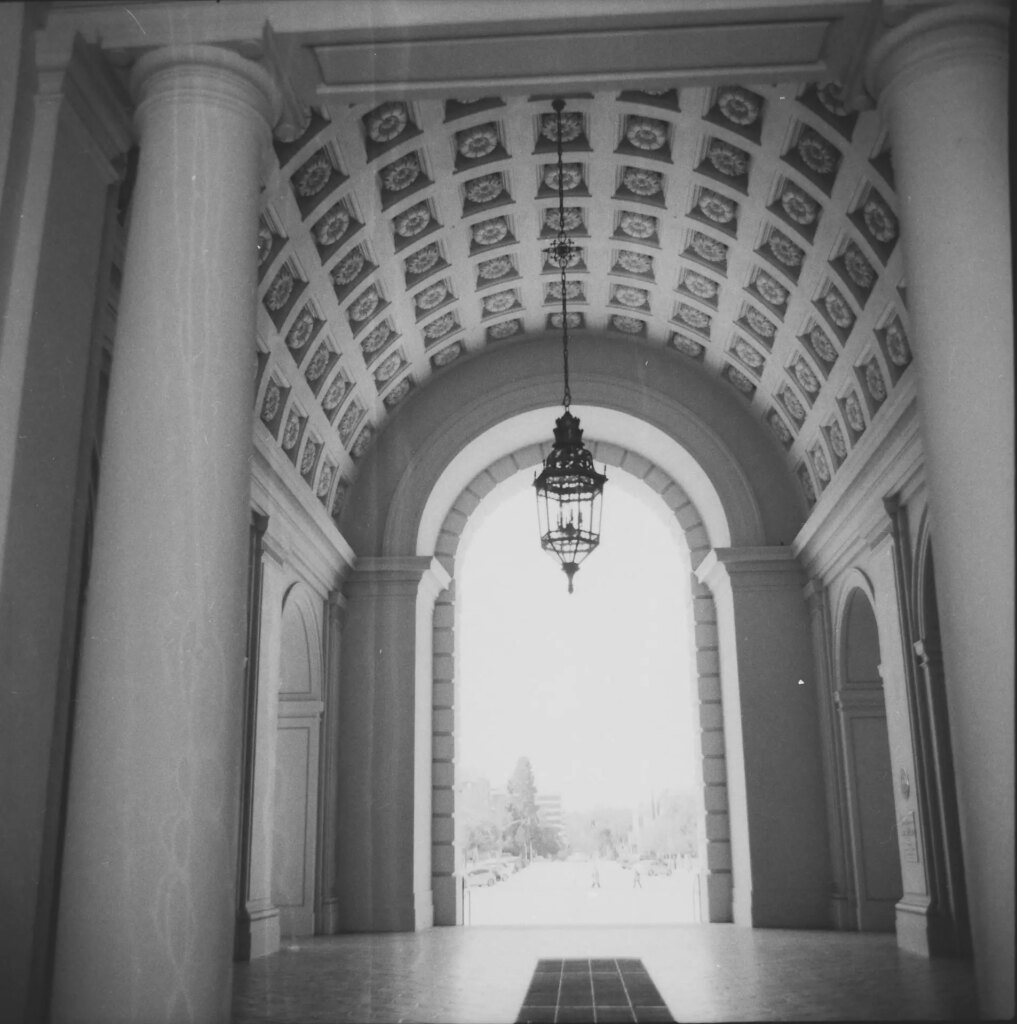
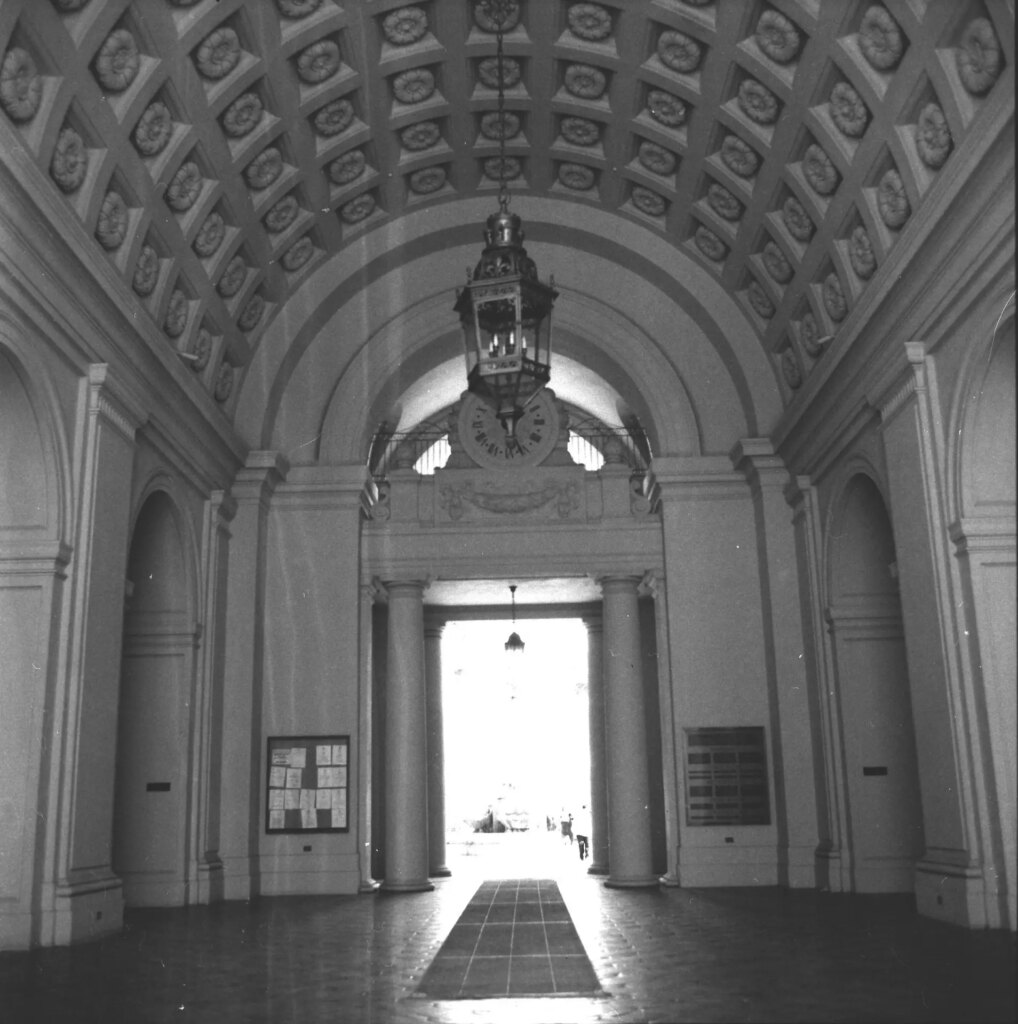
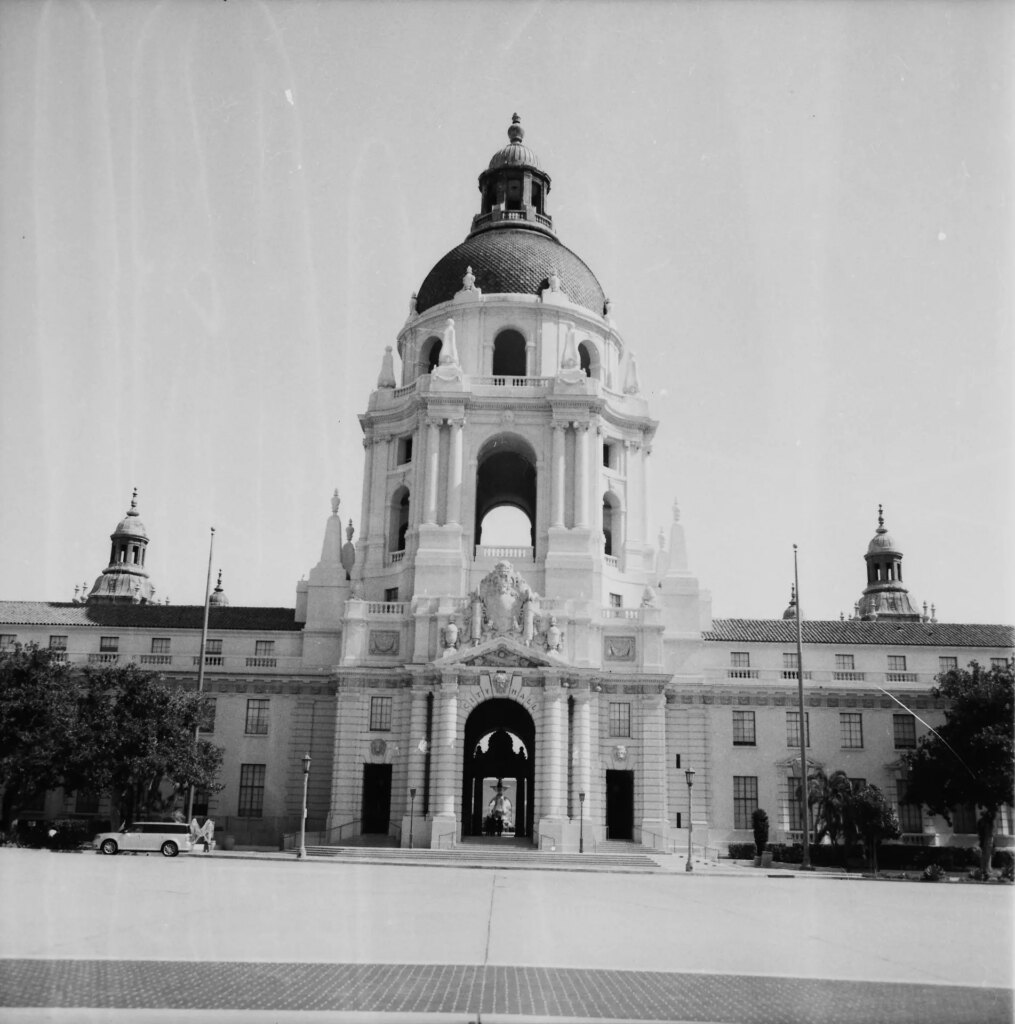
At home, I processed the Ilford in Rodinal (1:25 dilution) for 8.5 minutes, adding 30 seconds to compensate for the Rodinal’s age (around 5 YO). As it turned out, no compensation was necessary because the Rodinal was as potent as the day I bought it. However, I messed up on the washing/drying step. After I soaked it Foto-Flo, I used a fine sponge to speed up the drying. Big mistake. A streak was created, running down the emulsion side of the roll. I couldn’t take out the streak despite repeated washing , soaking and drying. Finally I was able to mitigate the appearance of the streak in post-processing.
For some strange reasons, the square format appeals to me, despite its atypical and confining dimensions. My creativity is constantly being challenged by the format when making images inside a square box — whether persons or landscapes — but I try to be up to the challenge each time I look through the finders of my square format cameras, ready to grasp the picture I imagine in my mind’s eye.
For more of my work, please check them out at: Instagram @renevillaroman
Share this post:
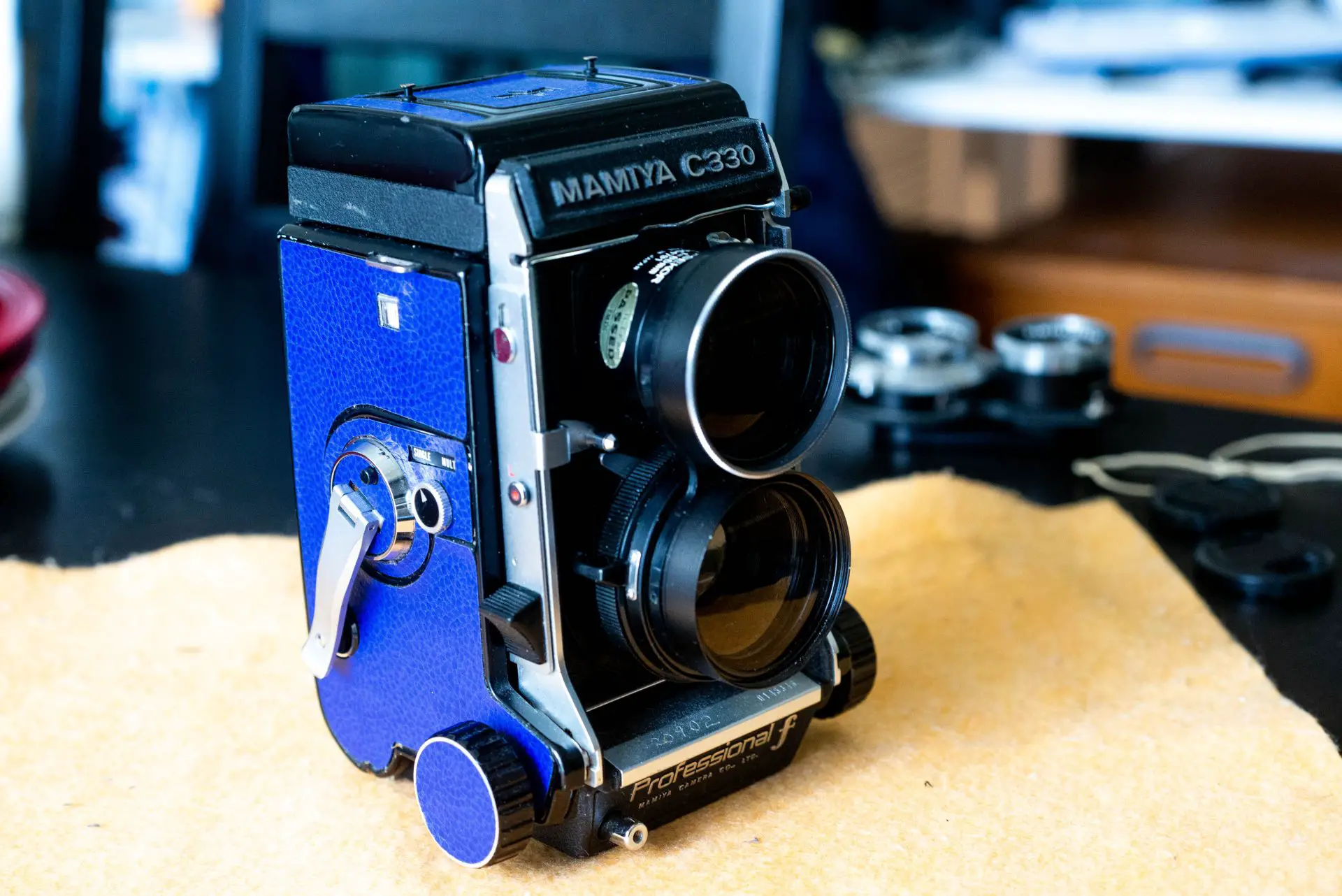








Comments
Mamiya C330F, and How I Turned it into a Swan - By Rene Villaroman - Everybod Loves Celluloid on Mamiya C330F, and How I Turned it into a Swan – By Rene Villaroman
Comment posted: 16/12/2022